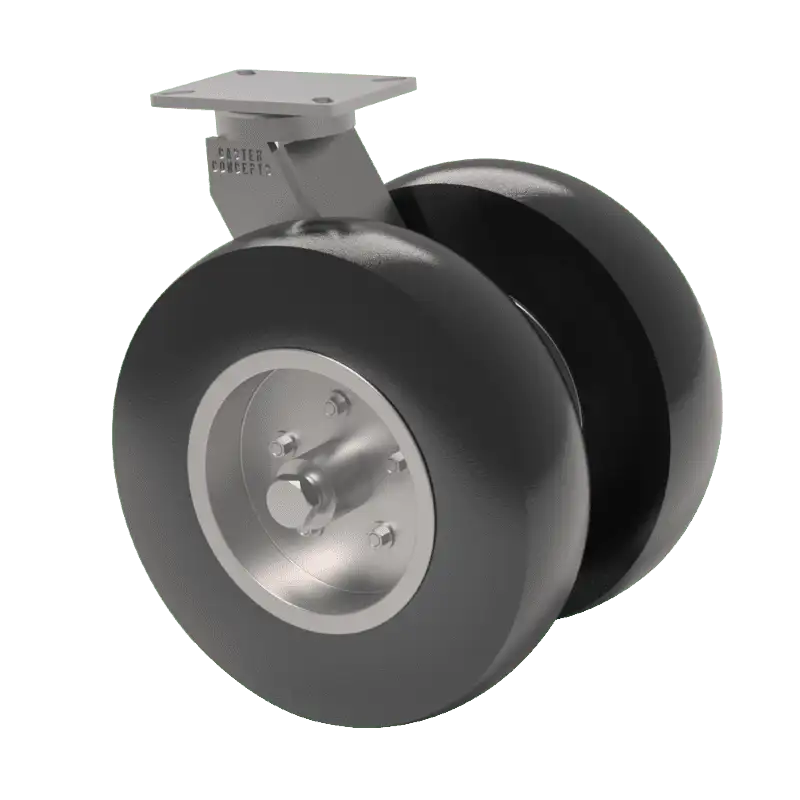

Pneumatic tires, also known as Pneumatic wheels, are made of rubber and resemble automobile tires. They are primarily used for outdoor applications and applications where damaging flooring is a concern. The rubber composition gives Pneumatic wheels a cushioning effect which creates benefits like:
One limitation of Pneumatic wheels is that they are not capable of carrying as much weight as similar size caster wheels. Because Pneumatic wheels are made of rubber and usually filled with air, they are limited on weight capacity.
Pneumatic wheels do not provide ergonomic benefits because they are softer and have a larger footprint due their greater width. Pneumatic wheels require greater force to start rolling and to turn, because of their greater width and larger footprint. Ergonomic performance becomes even worse if the wheels are not properly inflated.
Maintaining proper air pressure is key to the performance of Pneumatic tires, just as it is with automobile tires. This means that maintenance is necessary, resulting in additional cost and hassle. Because these tires are made of rubber, they are susceptible to punctures, cracking, seals deteriorating and losing air. Changes in environmental temperatures can also impact air pressure in Pneumatic tires. One option to reduce the amount of maintenance required, is to fill the tires with foam, rather than air.
We offer a complete line of Pneumatic Tire / Wheel casters.